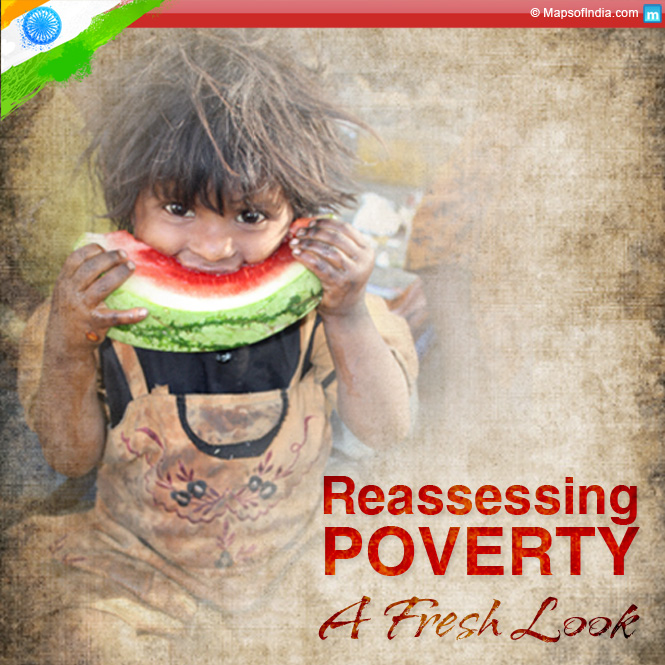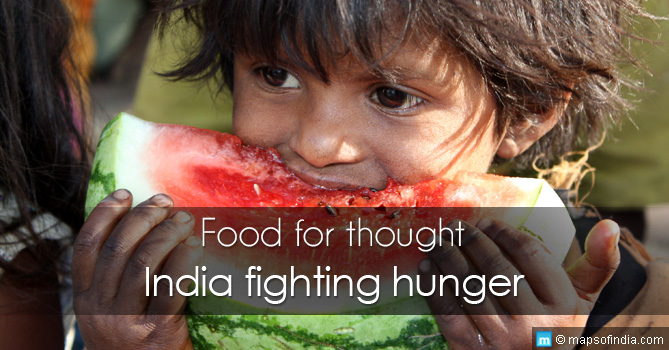Growth and development have been the watchwords in India over the past few months. But is the development for real, or at least is it uniform in its outreach? It looks like the poor masses of the country have not found much relief. Last month, a study by Oxford University in UK, threw up some alarming statistics. The report says that India is the second poorest country in South Asia. Using the Multi-Dimensional Poverty Index (MPI) 2014, a tool to assess poverty levels, researchers established that about 40 percent of the poor people in the 49 countries studied live in India. In South Asia, only the war-fraught nation of Afghanistan fared worse than India.
Poverty Line in India 2011-12
In 2011-12, the Suresh Tendulkar panel submitted its recommendations to the government of India based on which the poverty line had been ascertained at a spending capacity of INR 27 in rural areas and INR 33 in urban areas. It was determined by the panel that this was the minimum levels at which people may find it difficult to obtain two meals a day. The Rangarajan committee, headed by former RBI governor C. Rangarajan was asked to revisit the formula used by the Tendulkar panel to measure poverty and to identify the number of people in the country who lived below the poverty line.
New Poverty Line in 2014
According to recent news reports, the Rangarajan committee submitted a study to the Minister of State for Planning Mr. Rao Inderjit Singh recommending a reassessment of poverty in the country. According to the report’s recommendations, the poverty line has been redrawn and now those spending under INR 32 a day in rural areas and INR 47 in the urban regions of India should now be deemed poor. The recommendations of the report have been released as a prelude to the NaMo administration’s first budget session in Parliament and are likely to revive a renewed debate over poverty and measures to curb it in the country.
In 2011-12, the Rangarajan panel had been instituted to placate the outcry over poverty identification and a need for reassessment of the unrealistically low poverty line determined by the UPA government based on the Tendulkar report. Opposition members had also alleged that the report was purported to provide a false sense of decline in poverty. At the time it had been estimated by Tendulkar and other panelists that about 354 million of the country’s population was living below the poverty line in 2009-10 and about 269 million in 2011-12. This means that, according to Tendulkar’s calculations by 2011-12, about 21.9 percent of India’s population was below the poverty line.
This assessment was deemed inaccurate and a huge outrage followed, especially in the media and in social media sites such as Twitter. The Rangarajan panel now suggests that about 35 percent more poor people live in the country. According to the Rangarajan formula the number of poor people in the country in 2011-12 was about 363 million. The Rangarajan panel says that currently an overall of about 29.5 percent of the country’s population lives below the poverty line. This means almost a third of the country’s population lives in poverty now. By retrospective assessment, the Rangarajan panel has estimated that in 2009-10, 38.2 percent of the population was below the poverty line. The poverty ratio is thus believed to have shown a dip of 8.7 percentage points over the past two years.
In the rural areas, the number of people living in poverty has gone up 20 percent from 217 million to 260.5 million based on the new formula. The greatest change by far has been in the urban sectors where the Rangarajan formula recalculates the number of poor people to be 102.5 million instead of 53 million – a change of almost 50 percent. The new committee also suggested that the poverty estimations disengage from the social security entitlements given to people by the government.
The approach taken by the Rangarajan committee has been appreciated by economists and experts. The panel defines poverty as a relational value to the average levels of income in the nation and not as an absolute level of income. This formula seems to be in vogue both in the EU and in the USA for estimation of poverty levels. It is, however, a new methodology for India and is likely to be debated. The fact remains undisputed, however, that India needs to reassess its poverty alleviation measures and quickly speed up its activities in this area.
Related Information:





